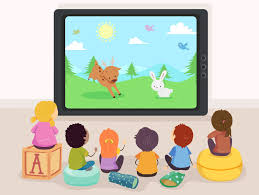In today’s digital age, innovative teachers are constantly seeking engaging resources to capture their students’ attention and enhance learning experiences. One particularly effective resource often overlooked is kids animated shows, which offer colorful characters, captivating storylines, and valuable lessons wrapped in entertainment. These shows can serve as powerful educational tools when incorporated thoughtfully into lesson plans.
The connection between education and entertainment has never been more important. When educators recognize the potential of animated content, they can transform ordinary lessons into memorable experiences that resonate with young learners. Children naturally gravitate toward animated characters who model positive behaviors, problem-solving skills, and emotional intelligence—all crucial aspects of early childhood development.
Educational animated series have evolved significantly over the decades. What once might have been considered mere entertainment now often includes carefully crafted curricula developed with input from childhood education experts. Shows like “Daniel Tiger’s Neighborhood” teach emotional regulation, while “Wild Kratts” introduces complex scientific concepts through adventure narratives. “StoryBots” demystifies everything from how computers work to why the sky is blue, making abstract concepts accessible to young minds.
For educators working with diverse classrooms, animated shows provide visual learning opportunities that can transcend language barriers. The visual storytelling helps English language learners follow along even when vocabulary might be challenging. Additionally, many modern animated series consciously include diverse characters, helping all students see themselves represented in educational content.
Implementing animated content effectively requires thoughtful planning. Rather than using videos as mere time-fillers, skilled educators preview content, prepare guiding questions, and design follow-up activities that reinforce the learning objectives. A short clip from an animated series might introduce a science concept, which students then explore through hands-on experiments, or inspire creative writing prompts based on the characters’ adventures.
The most effective implementations involve active viewing rather than passive consumption. Teachers might pause episodes to ask prediction questions, discuss character motivations, or identify key concepts. After watching, students can engage in discussions, create artwork, write stories, or complete projects inspired by the content. This multi-modal approach helps cement learning in ways that traditional instruction alone might not achieve.
Critics might worry about screen time in educational settings, but research increasingly shows that high-quality, curriculum-aligned animated content, when used judiciously and with purpose, can yield significant educational benefits. The key lies in the teacher’s approach—using animation as one tool among many rather than relying on it exclusively.
Parent communication forms an essential component when incorporating media into the classroom. When families understand the educational purpose behind showing animated content, they can reinforce concepts at home and engage in conversations about what their children are learning. Many educational series offer parent resources that complement classroom use.
Professional development for educators increasingly includes media literacy components, helping teachers evaluate animated content for educational value, age appropriateness, and alignment with learning standards. Organizations like Common Sense Media provide valuable reviews and educational frameworks for incorporating media thoughtfully.
Technology integration specialists in many school districts can help teachers identify high-quality animated resources that align with specific curriculum standards. These collaborations ensure that media use supports rather than distracts from core educational goals. As educational technology continues evolving, the thoughtful integration of animated content represents one avenue for engaging 21st-century learners.
In conclusion, when skillfully incorporated into comprehensive lesson plans, animated shows represent powerful tools for modern educators. By leveraging children’s natural attraction to animated characters and storytelling, teachers can create memorable learning experiences that resonate long after the screen goes dark. The magic happens not in the animation itself, but in how talented educators transform entertainment into educational opportunities.

